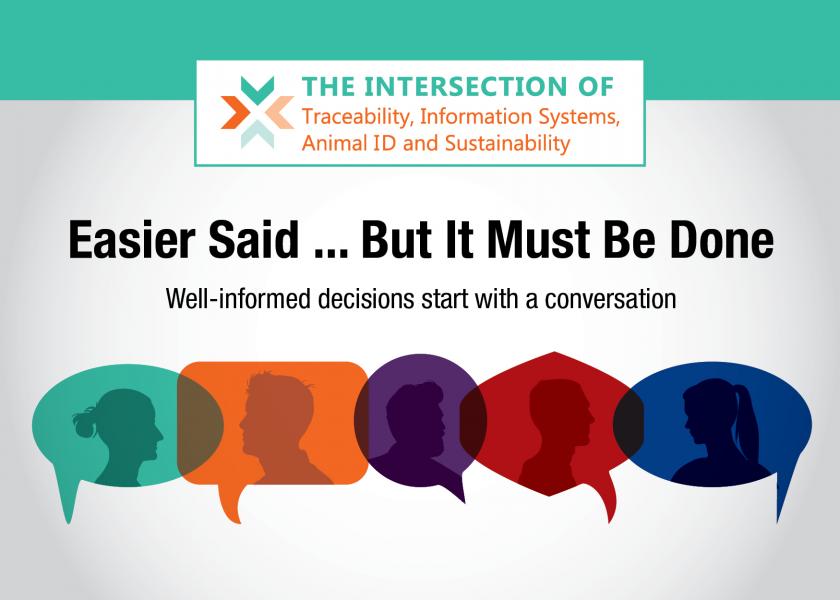Easier Said ... But It Must Be Done

As many, if not all, in animal agriculture can attest, conversations, meetings and research around traceability, information systems, animal identification and sustainability have been happening for several decades. So, why does the National Institute for Animal Agriculture (NIAA) and Farm Journal sense now is the time to foster a more robust conversation?
Because if we, who believe strongly animal-derived proteins are good for people, do not share animal agriculture’s story, those who wish to diminish or eliminate animal agriculture from today’s food system will lead the conversation. Sadly, in several cases, they are already forming the narrative.
Mission Critical
Farm Journal and NIAA are both internal animal agriculture organizations. As a leading voice in the swine, beef, dairy and veterinary sectors, Farm Journal’s mission is to purposefully share relevant content with you, its readers, as well as listen. After all, today’s communication model is more two-way than one-way.
NIAA’s mission is to convene animal agriculture experts and allies to explore, discuss, learn and develop knowledge that fosters interdisciplinary cooperation. Since 1916, NIAA has been focused on the continuous progress of animal agriculture.
Staying true to our missions, neither of our organizations are in spaces that engage with shoppers, influencers and others affecting the social license of animal agriculture. However, we can foster conversation and exploration that provides for well-informed decision-making by those in animal agriculture and those who engage with shoppers and influencers — checkoffs, trade associations and allied industries.
Two-Way Communication
Let’s start with a more robust dialogue that focuses on the strengths, weaknesses, opportunities and threats at the intersection of traceability, information systems, animal identification and sustainability. We will explore and learn through research insights, case studies and point-counterpoint-style deeper dives. And we most certainly want to live up to today’s two-way communication model. Feedback and dialogue are encouraged and, quite frankly, required for success, whether through email, webinars or in-person gatherings.
Our work is not to advocate for a certain outcome or decision. As the facilitator of this conversation, we might introduce research or insights that challenge our thinking. We might allow for threads of conversation to be fully explored before moving on to the next. But no matter, we always want to ensure we live up to the expectation our stakeholders have come to expect — a place where tough issues can be explored and discussed in a collaborative manner.
Advancement is Necessary
It has been said there is no issue so great that reasonable people cannot come together to solve it. We will identify and bring those reasonable people in our industry together.
It also has been said that humankind has yet to develop a technology or innovation that is not used. While some innovations might be replaced by more advanced systems, it is hard, if not impossible, to identify advancements that have been “shelved” simply because we’ve decided not to use them. Just like communities went from communicating with letters and postcards to telegraphs then the telephone and onto email and text messaging, there are numerous examples in animal agriculture of similar advancements.
In the coming months, Farm Journal and NIAA look forward to exploring the intersection of traceability, information systems, animal identification and sustainability with you.







